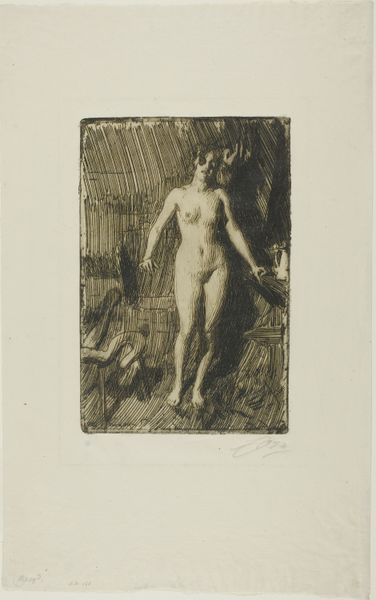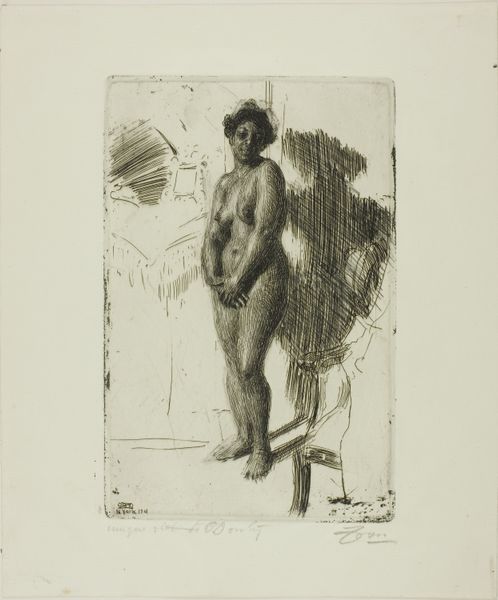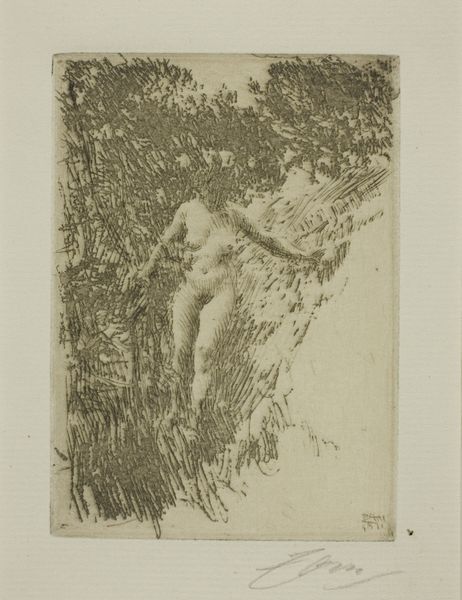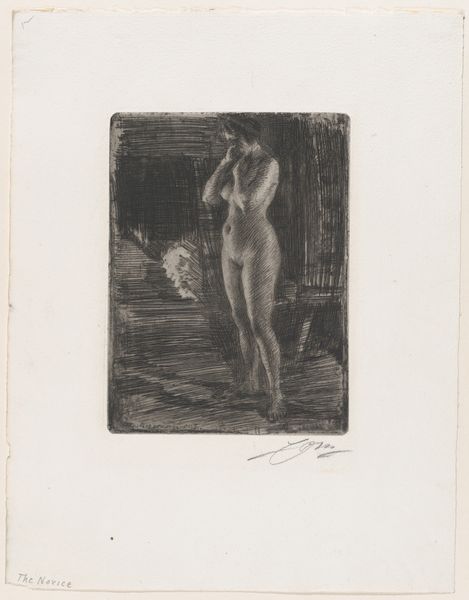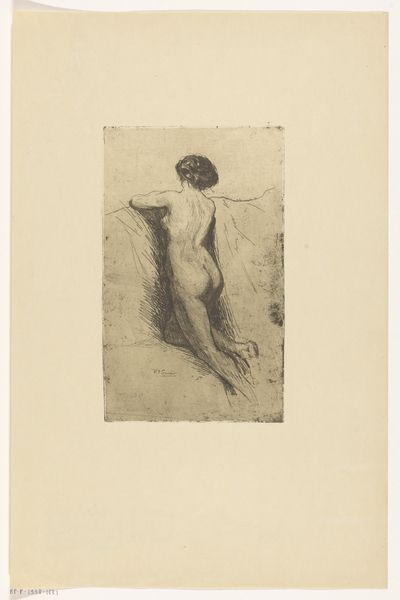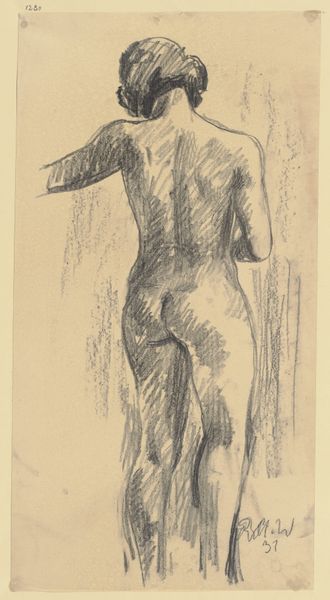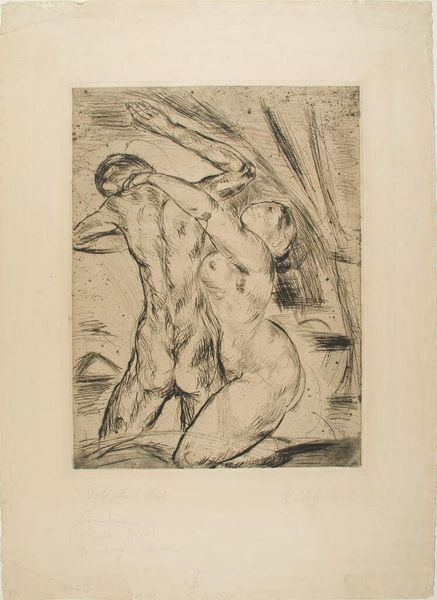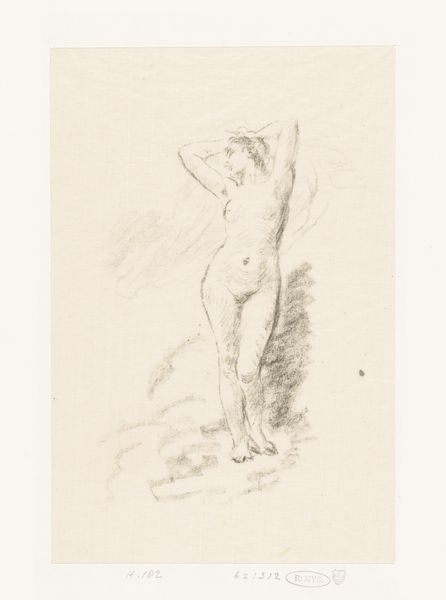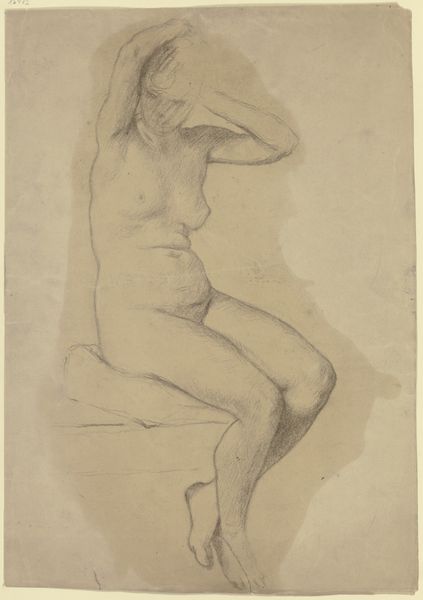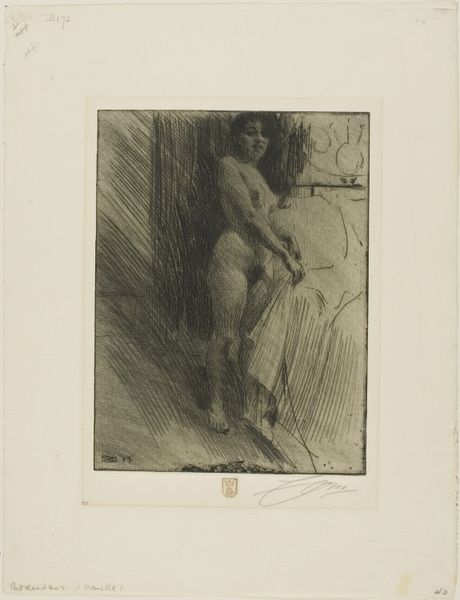
Dimensions: 199 × 150 mm (image/plate); 324 × 241 mm (sheet)
Copyright: Public Domain
Curator: Looking at Anders Zorn's etching, "Nanette," created in 1903, one is immediately struck by its raw, almost sketch-like quality. What are your first impressions? Editor: The composition evokes a sense of intimacy but the starkness of the lines, created by the print-making process itself, gives it a certain…roughness. I am thinking about labor involved to produce multiple images with a level of technical skill while the artwork also portrays an artistic expression. Curator: Precisely. Zorn, known for his nudes, uses the etching technique to suggest light and shadow, framing Nanette’s figure in a way that’s both classical and modern. It certainly speaks to contemporary discussions surrounding the gaze and the representation of the female body within the Western art tradition. Editor: Etching is a powerful medium to expose this subject matter, by making an easily reproducable image available for wider audience. The social context of reproduction, labor, and the availability for consumers becomes significant, even the price of the paper the image printed on. Curator: Agreed. And, to consider the historical context, etchings like these circulated among a particular segment of society, impacting dialogues around sexuality, class, and artistic representation. Also, if we observe the contrast and play with shadow, we could claim the artist reclaims the beauty of an unretouched female figure. Editor: Yes, it's easy to overlook that labor within the creative process, yet, to do so overlooks so much concerning the class and social positioning of the subject and object and circulation itself. Here, it creates this arresting vision of a person rendered so realistically by means of mass production. The art production means matter a lot to create its subject. Curator: Exactly, and thinking through those production elements and how they create and constrain what we see provides such a rich approach to interpreting art of this period and beyond. It shows we need to think carefully when interpreting these sorts of images and their wide variety. Editor: In closing, I find myself compelled to understand this tension. These lines and materials reveal more than an aesthetic, reflecting its position in society. Curator: And I appreciate your analysis as it makes me reflect again on representation, labour, class and social dynamics, and the intersectionality within the historical and cultural discourse surrounding “Nanette.”
Comments
No comments
Be the first to comment and join the conversation on the ultimate creative platform.
